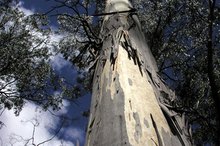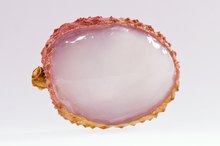Acacia belongs is a large genus tropical and subtropical shrubs and trees, endemic to Australia, Africa, and North and South America. Various parts of this large genus of plants are used externally and internally for medicinal purposes, and as a perservative. A significant number of this genus of plants bears pollen, and has been reported to cause pollinosis or strong allergic reactions. Speak with your physician if you experience an allergic reaction to Acacia tree or any of its derivatives.
If you are experiencing serious medical symptoms, seek emergency treatment immediately.
Use of Acacia Plants
Acacia is a large plant genus including at least 1,000 species of threes and shrubs. These trees are native to Africa, Australia and South and America, and have been introduced to France, Portugal, Italy and Spain. In ancient Egypt, this genus of plants were used to make paint, and the oil is still used in the printing industry. They are also used as a thickener for chewing gum, jellies, and candies and as a stabilizer in soft drinks and beers. When used as a stabilizer, this plant helps to maintain the foam in beer and soft drinks, and prevent the breakdown of chemicals in food mixture. It also used as a demulcent in numerous types of topical creams as it has anti-inflammatory properties. Acacia gum is a dry exudate extracted from the stem of the tree, and is used to shape and form pharmaceutical tables.
- Acacia is a large plant genus including at least 1,000 species of threes and shrubs.
- In ancient Egypt, this genus of plants were used to make paint, and the oil is still used in the printing industry.
Immune Response to Acacia
Eucalyptus Oil Side Effects
Learn More
Acacia pollinates in February and March 1. Acacia trees release a heavy pollen that causes an IgE mediated allergic response in sensitized individuals. Pollen acts as an irritant and the immune system mistakenly considers the proteins in pollen as foreign, and dangerous. The immune system activates and mobilizes pro-inflammatory immune cells, primarily mast cells and basophils, to the nasal passages and upper respiratory tract. These immune cells release immune mediators such as histamine that dilate and increase the permeability of blood vessels. The increased permeability of capillaries in the nasal capillaries and upper respiratory tract results in the observed allergic reaction including allergic rhinitis and asthma 2.
Symptoms of an Allergic Reaction to Acacia
Allergic rhinitis, also known as hay fever, and asthma are allergic reactions commonly observed in wood workers exposed to pollen from acacia or acacia wood. Allergic rhinitis is caused by inflammation of the mucous membranes lining the nose and sinuses, and the subsequent release of histamine. The release of histamine into the nasal cavity, throat, bronchioles, larynx and trachea result in cold-like signs and symptoms. The increased permeability of capillaries in the nasal cavity result in nasal congestion and a runny nose, a post-nasal drip, sneezing, a decreased sense of taste and smell as well as sinus pressure and facial pain. Coughing, watery and itchy eyes as well as swelling of the skin underneath the eyes are also observed 2.
- Allergic rhinitis, also known as hay fever, and asthma are allergic reactions commonly observed in wood workers exposed to pollen from acacia or acacia wood.
- The release of histamine into the nasal cavity, throat, bronchioles, larynx and trachea result in cold-like signs and symptoms.
Treatment for an Allergic Reaction to Acacia
Signs & Symptoms of Throat Allergies
Learn More
The best way to treat allergic rhinitis or hay fever is to avoid exposure to acacia pollen or wood. Since this isn't always possible, over the counter antihistamines such as Benadryl are helpful if the symptoms are not severe. Antihistamines reduce nasal inflammation, itching, and sneezing by blocking the action of histamine. For severe allergic rhinitis, your physician may prescribe nasal corticosteroids such as Flonase to reduce nasal inflammation, itching, and a runny nose. Oral decongestants are recommended to reduce nasal congestion. Speak with your physician before starting a treatment program.
- The best way to treat allergic rhinitis or hay fever is to avoid exposure to acacia pollen or wood.
- For severe allergic rhinitis, your physician may prescribe nasal corticosteroids such as Flonase to reduce nasal inflammation, itching, and a runny nose.
Related Articles
References
- PollenLibrary.com: Catclaw, Wattle (Acacia)
- Allergy, Asthma, and Immunology Foundation of Northern California: Pollens and Other Allergens
- Babiker R, Merghani TH, Elmusharaf K, Badi RM, Lang F, Saeed AM. Effects of Gum Arabic ingestion on body mass index and body fat percentage in healthy adult females: two-arm randomized, placebo controlled, double-blind trial. Nutr J. 2012;11:111. doi:10.1186/1475-2891-11-111
- Jensen CD, Spiller GA, Gates JE, Miller AF, Whittam JH. The effect of acacia gum and a water-soluble dietary fiber mixture on blood lipids in humans. J Am Coll Nutr. 1993;12(2):147-54. doi:https://doi.org/10.1080/07315724.1993.10718295
- Ali BH, Ziada A, Blunden G. Biological effects of gum arabic: a review of some recent research. Food Chem Toxicol. 2009;47(1):1-8. doi:10.1016/j.fct.2008.07.001
- Min YW, Park SU, Jang YS, et al. Effect of composite yogurt enriched with acacia fiber and Bifidobacterium lactis. World J Gastroenterol. 2012;18(33):4563-9. doi:10.3748/wjg.v18.i33.4563
- Su GL, Ko CW, Bercik P, et al. AGA Clinical Practice Guidelines on the Role of Probiotics in the Management of Gastrointestinal Disorders. Gastroenterology. 2020 Aug;159(2):697-705. doi: 10.1053/j.gastro.2020.05.059.
- Calame W, Thomassen F, Hull S, Viebke C, Siemensma AD. Evaluation of satiety enhancement, including compensation, by blends of gum arabic. A methodological approach. Appetite. 2011;57(2):358-64. doi:10.1016/j.appet.2011.06.005
- Bliss DZ, Savik K, Jung HJ, Whitebird R, Lowry A, Sheng X. Dietary fiber supplementation for fecal incontinence: a randomized clinical trial. Res Nurs Health. 2014;37(5):367-78. doi:10.1002/nur.21616
- Nasir O, Umbach AT, Rexhepaj R, et al. Effects of gum arabic (Acacia senegal) on renal function in diabetic mice. Kidney Blood Press Res. 2012;35(5):365-72. doi:10.1159/000336359
- Gamal el-Din AM, Mostafa AM, Al-Shabanah OA, Al-Bekairi AM, Nagi MN. Protective effect of arabic gum against acetaminophen-induced hepatotoxicity in mice. Pharmacol Res. 2003;48(6):631-5.
Resources
Writer Bio
Danielle Stevens is a graduate of George Washington School of Medicine and is currently a resident fellow at Georgetown University Hospital. Stevens is interested in pediatrics and gynecology as well as pediatric surgery. Stevens has been writing professionally since 2008 for The American College of Obstetricians and Gynecologists, Words and Numbers, and Prime Inc.








